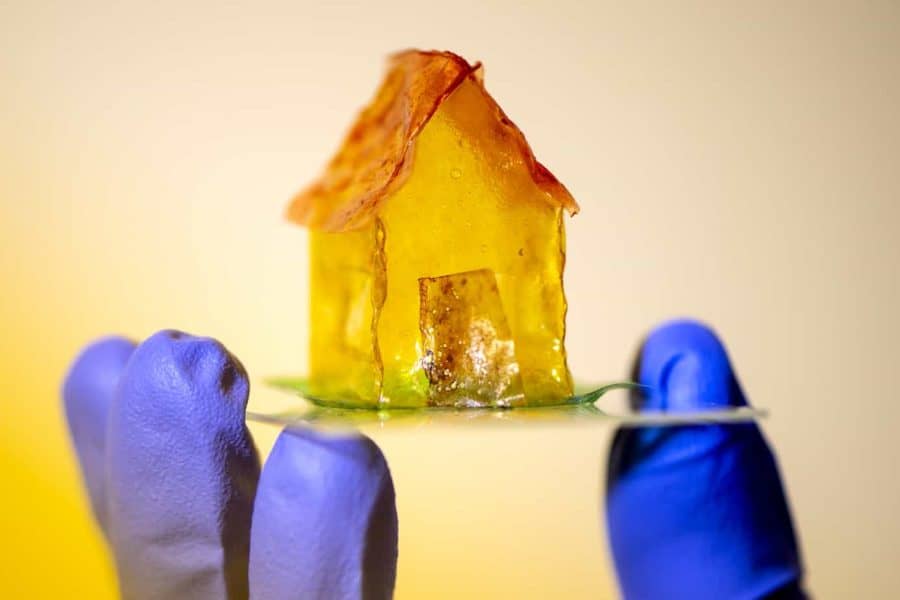Imagine if we could grow a building the way coral polyps grow a reef, or if living cells in our clothes could break down sweat and body odor. Imagine colonies of bacteria on space stations produced the filament for 3D printers. Imagine materials we use every day could repair themselves.
It sounds like science fiction, but Neel Joshi, an associate professor of chemistry and chemical biology at Northeastern, believes such feats are achievable. And the National Science Foundation agrees.
Engineered living materials—substances made of or by reprogrammed cells—could improve on and replace plastics, concrete, and other materials that are currently made with more standard manufacturing practices, Joshi says.
“The carbon footprint of materials manufactured for our entire built environment is huge,” Joshi says. “Being able to decrease that by following the model of how biology builds things is going to be very important.”
This idea, submitted by Joshi and his team, has been selected as a grand prize winner in the National Science Foundation’s 2026 Idea Machine competition, which sought “grand challenges” to help shape the U.S. research agenda for years to come. The team’s proposal was one of four grand prize winners selected from close to 800 submissions.
The idea of using bacteria to build things isn’t as wild as it may seem, Joshi says. The biomanufacturing industry already uses microbes to make fragrances, vitamins, pharmaceuticals, and other useful molecules. And there are a few larger materials being created by living cells as well.
“Some of our compostable plastics that you might find in the cafeteria are made from polymers that are harvested from microbes,” Joshi says. “That’s a step in the right direction. But there are very few examples of those types of materials, and they also don’t really cover the wide range of material properties that we would want. The real vision of engineered living materials is to go beyond that and program cells to make functional materials and goods directly, circumventing traditional manufacturing practices.”
Getting living cells to build a coherent material, as opposed to a molecule, is more challenging, but this happens regularly in nature. Some colonies of microorganisms create slick, glue-like layers called biofilms to protect themselves—think of the plaque on your teeth or the slime on a river rock—and these mechanisms could be adapted to create things like waterproof coatings or plastic-like materials.
Currently, we make about 300 million tons of plastic every year, and the vast majority of it is not recycled. Plastics don’t really break down in the environment, and researchers are looking for ways to tackle the growing problem of plastic waste. Materials made by cells are much more likely to be biodegradable, Joshi says.
“Biology is very good at converting stuff that was useful in one form into another form and reusing all the same raw materials to make something else,” Joshi says. “Anything that you make from a living system is likely going to be more degradable than plastic.”
Joshi and his colleagues are already working on several new materials in their lab, including plastic-like substances created by bacteria.
“Learning from nature has been one part of doing this research,” says Avinash Manjula Basavanna, a postdoctoral researcher who has been focusing on creating bioplastics. “But this is one step ahead of typical biomimicry. We are engineering biology to customize materials to whatever we want.”
The group is also tweaking a biofilm created by E. coli bacteria to have different properties. The bacteria could be used to create a protective layer in the gut of someone with Crohn’s disease or colitis, guiding healing of lesions and inflamed areas.
“In the next 10 years, we will talk about using microbes for producing materials for different applications beyond what we can even imagine right now,” says Anna Duraj-Thatte, a postdoctoral researcher in the lab. “This is just the beginning.”
For media inquiries, please contact [email protected].


